#macroscelides
Explore tagged Tumblr posts
Text


14 notes
·
View notes
Text









Round-eared elephant shrew / Round-eared sengi (Macroscelides proboscideus), family Macroscelidae (elephant shrews)
Dierenpark Zie-ZOO, taken in October 2024 (first two photos) and January 2025 (rest)
#animals#zoo#zoo photography#nature#round-eared elephant shrew#round-eared sengi#Macroscelides proboscideus#macroscelidae#elephant shrews#dierenpark zie-zoo#fighting for my life out here. couldn't remember the species and for some reason it was missing from the zoo's animal list#luckily ol reliable worked out for me (googling the zoo name and an approximation of species and looking for photos by other photographers)
4 notes
·
View notes
Text
Round 3 - Mammalia - Macroscelidea



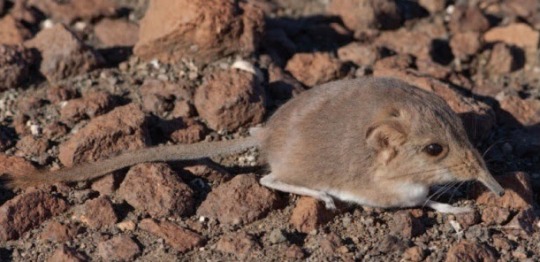
(Sources - 1, 2, 3, 4)
Our first group of placental mammals, as well as our first group belonging to a diverse clade of mammals known as “Afrotherians”, the order Macroscelidea are commonly called “elephant shrews”, “jumping shrews”, or “sengis.” Like many animals commonly called shrews, macroscelideans are not true shrews, and are closer related to elephants than they are to shrews! Macroscelidea includes one family, Macroscelididae, with 20 species in 6 genera.
Sengis are small, quadrupedal, and insectivorous. They have long, flexible snouts, which they use to search for food, with the length of the snout varying between species. They will then use their tongue to flick food into their mouth, much like an anteater. They eat mainly insects, spiders, centipedes, millipedes, and earthworms. Some species also feed on small amounts of plant matter, especially new leaves, seeds, and small fruits. They have long legs relative to their size, and scaly tails. They have large canine teeth, and also high-crowned cheek teeth similar to those of ungulates. They are mostly diurnal and very active, wary, well camouflaged, and adept at dashing away from threats. Several species make a series of cleared pathways through the undergrowth and spend their day patrolling them for insect life. If the animal is disturbed, the pathway provides an obstacle-free escape route. Sengis are uncommon, but widely distributed across Africa, mainly southern Africa.
Sengis are solitary, despite many species living in monogamous pairs. These pairs will only meet for mating, and not associate otherwise, living in separate nests. They share and defend their home territory, which is marked using their scent glands. Female sengis undergo a menstrual cycle similar to that of humans, making them one of the few nonprimate mammals to do so. The sengi mating period lasts for several days. After mating, the pair will return to their solitary habits. After a gestation period varying from 45 to 60 days, the female will bear a litter of one to three young. The young are born relatively well developed, and are able to run within a few hours. They remain in the nest for several days before venturing outside. After five days, the young's milk diet is supplemented with mashed insects, which are collected and transported in the cheek pouches of the female. The young then slowly start to explore their environment and hunt for insects. After about 15 days, the young will begin the migratory phase of their lives, and will eventually begin to establish their own territories. Females have litters several times a year.
Macroscelids are thought to have diverged from other afrotherians roughly 57.5 million years ago. The earliest definitive member was Chambia from the early-middle Eocene of Tunisia. Some early macroscelids, such as Myohyrax, were so similar to hyraxes that they were initially included with that group, while others, such as Mylomygale, were relatively rodent-like. These unusual forms all died out by the Pleistocene. The diversification of living macroscelids apparently began when the Rhynchocyon lineage split off about 33 Ma ago, in the early Oligocene.

Propaganda under the cut:
Sengis are one of the fastest small mammals, having been recorded to reach speeds of 28.8 kilometres per hour (17.9 mph).
Unlike most other sengis, Short-snouted Elephant Shrews (Elephantulus brachyrhynchus) utilize a network of safety burrows by digging their own burrows or stealing the pre-existing burrows of rodents.
The Cape Elephant Shrew (Elephantulus edwardii) feeds on both insects and the nectar of plants, covering its long nose in pollen. It is an important pollinator for the Pagoda Lily (Massonia bifolia), Hyobanche atropurpurea, and the Sulphur Sugarbush (Protea sulphurea).
The Somali Elephant Shrew (Galegeeska revoilii) was among the 25 "most wanted lost species” that were the focus of Global Wildlife Conservation's “Search for Lost Species” initiative. On 18 August 2020, 50 years after it was last seen and recorded, it was announced that a population had been found in Djibouti, the first documented since 1968.
Rufous Elephant Shrews (Galegeeska rufescens) are very meticulous about their foraging trails (see gif above). Throughout the trails are several spots for resting, scent-marking, and sunbathing. They maintain their trails by pushing aside leaf litter and other loose debris. The males usually spend most of their time cleaning the trails.
Young Rufous Elephant Shrews will climb on their parents’ backs and vigorously rub their four feet in the fur in a rapid vibrating motion. This allows them to transfer odors from scent glands on their feet to their parents, as well as pick up their parents’ scent. The mixture of the scents creates a family odor that can be used for recognizing family members.
The Etendeka Round-eared Sengi (Macroscelides micus) (image 4) is the smallest known sengi. It weighs less than one ounce (28 grams) and is 19 cm (7.3 inches) long, including the tail, when fully grown.
The Grey-faced Sengi (Rhynchocyon udzungwensis) is the largest known sengi, on average 56.4 cm (22.2 in) long, and weighing 711 g (1.6 lbs). This species was only recently discovered in January 2008.
#animal polls#round 3#mammalia#gonna just grit my teeth and bear it if anyone mentions Sing My Angel Of Music because if people only know these animals through memes#at least they know them
71 notes
·
View notes
Text




Saw these little fellas in the zoo of Leipzig and just wanted to hold them in my hand so bad.
Their international name is Macroscelides proboscideus, in English Round-Eared Elephant Shrew, and they are indeed more closely related to elephants than to shrews or rodents.
128 notes
·
View notes
Note
may i please suggest the incredibly goofy short-eared elephant shrew. bro is basically a furry sphere with stick legs and a really long tail, aka Perfection
The ideal creature!
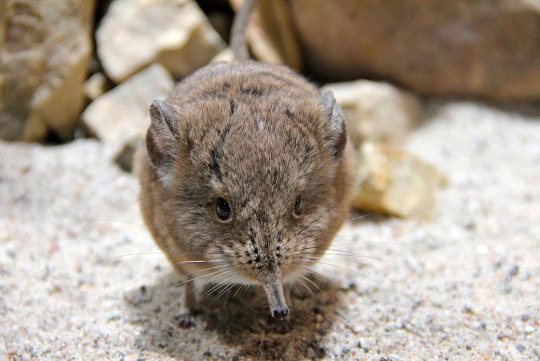
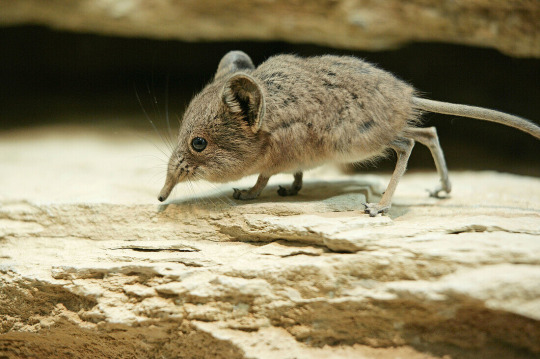
#southeast africa#botswana#namibia#south africa#round-eared shrew#short-eared shrew#mammalia#mammal#mammals#Macroscelidea#Macroscelididae#animal polls#poll blog#my polls#animals#polls#tumblr polls
82 notes
·
View notes
Photo
Round-eared elephant shrew (Macroscelides proboscideus)
Short-beaked echidna (Tachyglossus aculeatus)
European hedgehog (Erinaceus europaeus)

snout beast animals that look like this top contenders:
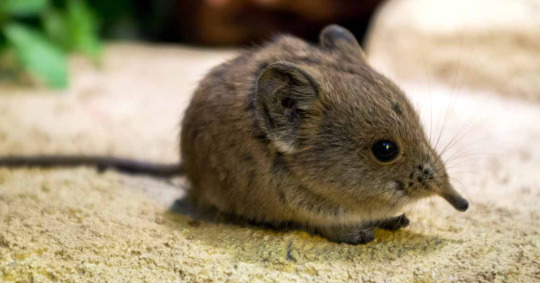

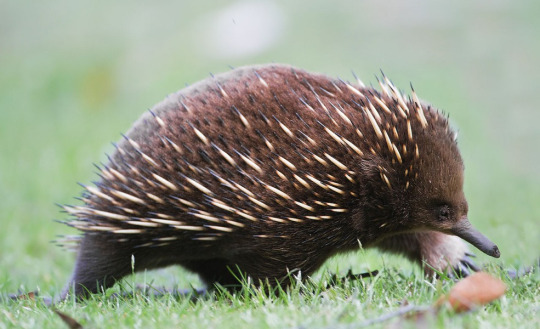
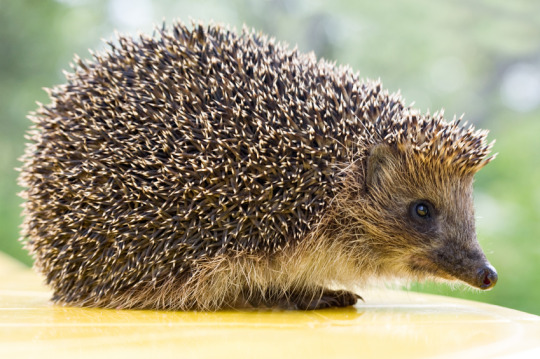
39K notes
·
View notes
Photo

Short-eared Elephant Shrew Macroscelides proboscideus Source: Here
215 notes
·
View notes
Note
Round-eared elephant shrew (Macroscelides proboscideus)
sneef snorf?
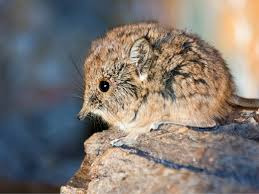
6K notes
·
View notes
Text
stuff i‘ve read the entire wikipedia article on at three am (mostly for writing):
Canalizations
Vlad the Impaler
Impaling (scarred me for life)
Chewing Gum
French Kings and Queens
The Mary Celeste
Black Museum (the episode from Black Mirror)
Tararre (also scarred me)
Monsieur Mangetout/Michel Lotito
Vampires
Street Lanterns
Jack the Ripper (also somewhat scarring)
A small town near where i live (kinda boring)
Ninjas
Manananggal
Steampunk
The Omen (1976)
Round-eared elephant shrews (Macroscelides proboscideus)
Arsenic
Mothman
11 notes
·
View notes
Photo

Round-eared Elephant Shrew Macroscelides Proboscideus © Crisisvisuals.com . . #animal #cape #animals #mouse #pet #cute #rare #shrew #sengi #karoo - from instagram
1 note
·
View note
Text
Living Fossil: Elephant Shrew

Meet of the most adorable of all the Living Fossil species, the Elephant shrew, Macroscelides proboscideus, one of 15 species of this order. These small, quadrupedal, insectivorous mammals strongly resemble rodents or opossums with their scaly tails, elongated snouts, and rather longish legs.
read more
Living Fossil: Elephant Shrew published first on https://triviaqaweb.weebly.com/
0 notes
Text
Round-eared elephant shrew (Macroscelides proboscideus)

Seriously stop pretending
837 notes
·
View notes
Photo

Look at that nose!!! 😍 To get a photograph of these mammals is not easy at all... Round-eared Elephant Shrews inhabit the more arid regions of the South, Western and Northern Cape. They forage on insects as well as roots and tubers - and they have been documented feeding on fallen berries as well. They are solitary animals, believed to be monogamous. They live in burrows that they expropriate from other rodents, reuse or dig themselves. Macroscelides proboscideus, somewhere dry, Western Cape, South Africa. #canon #canonmacro #macro #ishootwithorms #bionerds #biodiversity #planning #surveys #support #ecoexploration #mammal #mammals #mammalsofinstagram #shrew #shrews #shrewsofinstagram #elephantshrew #Macroscelidesproboscideus #nature #wildlife #arid #cute #longnose (at South Africa)
#mammalsofinstagram#ishootwithorms#bionerds#canon#nature#ecoexploration#support#macroscelidesproboscideus#arid#shrewsofinstagram#elephantshrew#mammal#shrew#macro#canonmacro#wildlife#biodiversity#mammals#longnose#planning#surveys#cute#shrews
30 notes
·
View notes
Photo

My husband John Dumbacher & his research associate Galen Rathbun discovered this Macroscelides micus, a new species of elephant shrew (or Sengi) in the family Macroscelididae. It is only found in gravel plains in the Etendeka formation of north-west Namibia. A member of the superorder Afrotheria, it is actually more closely related to elephants and manatees than mice! I was fortunate to spend a few months chasing after these 'flute-snoots'. Sweet docile creatures...and FAST! #elephantshrews #research #work #expedition #science #biology #newspecies #namibia #fieldwork #tiffanybozic (at Namibia)
18 notes
·
View notes
Text
ちっちゃな毛玉が可愛すぎる!産まれたばかりのハネジネズミの赤ちゃん
アフリカの動物園で産まれたばかりの、ハネジネズミの一種、「round-eared elephant shrew(Macroscelides proboscideus)」の赤ちゃん。 産まれた赤ちゃんは双子で、ピンポン玉よりも小さいため、飼育員からはピンとポンと名付けられて可愛がられているそうな。 その英名が示すとおり、ゾウみたいに長い鼻をヒクヒク動かす様子が可愛い。 最初じっとしてるからわからなかったけど、赤ちゃんもやっぱり素早さすごいね。 【関連】捕食者のトカゲから猛スピードで逃げるハネジネズミ頭から手足と尻尾が生えたみたいな逆関節のネズミ ピグミージェルボア(コミミトビネズミ)チェスター動物園で新しく産まれたハイラックスの赤ちゃんたちがことのほか可愛い生まれた瞬間デスゲーム開始。命がけでヘビたちから逃げる、赤ちゃんウミイグアナがドラマチックすぎる Source: 小太郎ぶろぐ
View On WordPress
0 notes
Photo

Round-Eared Elephant Shrew Macroscelides proboscideus Source: Here
#macroscelides proboscideus#elephant shrew#round eared elephant shrew#shrew#shrews#animals#animal#wildlife
83 notes
·
View notes